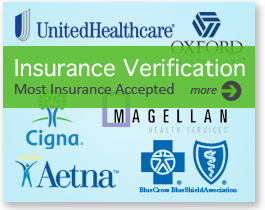The Rise of Prescription Drug Abuse in America

Table of Contents
Prescription drugs are designed in laboratories by talented researchers looking for ways to cure disease, reduce discomfort and generally improve quality-of-life scores. According to drug maker GlaxoSmithKline, the path from discovery to store shelves takes 12 to 15 years, and $800 million per drug, to complete. When the drugs are available, researchers feel confident that the drugs will be safe to use as directed, and many diseases that were once considered deadly can be effectively controlled with the use of prescription medications.
Unfortunately, prescription drugs also have many dark sides. Some prescription drugs are incredibly powerful, and the sensations they bring about are amazingly pleasant, and people who take these drugs may find that they’re unable to control their intake of these drugs. Their use becomes compulsive, and often, they need help in order to overcome the addictions they develop to these medications.
Popular Drugs for Abuse
Almost any drug could become a drug of abuse, if people choose to take the drugs in ways that their doctors do not intend. There are specific types of drugs, however, that seem to be closely linked to addiction issues. According to the National Institute on Drug Abuse (NIDA), over 7 million people in the United States took medications for non-medical purposes in 2010, and these people typically took:
- Pain relievers
- Tranquilizers
- Stimulants
- Sedatives
Pain relievers such as Vicodin and OxyContin produce a strong sensation of euphoria, when they’re taken in very high doses or when those doses are placed too close together, and they can cause profound changes in the brain that can create strong cravings for drugs. It’s widely known that painkillers of all sorts can be both dangerous and addictive, and as a result, people who take these drugs may be quite careful to avoid taking them at improper levels. They may even overcorrect and take very low doses of drugs they’re prescribed, simply because they fear addiction. A study in the journal Arthritis Care and Research, of people with disabling arthritis of the hip and knee, highlights this issue. In this study, researchers write, participants were “reluctant to take painkillers, and when they did, they generally took them at a lower dose or frequency than prescribed.” As the risk of painkiller addiction becomes more widely known, these cases of addiction fear might become more common.
Sedatives and tranquilizers might not be seen as “risky,” when compared to painkillers, but these drugs also cause profound changes in the brain, and people who abuse these drugs may struggle with cravings for drugs when they try to stop using. People who abuse these drugs may also deal with terrible physical pain and withdrawal symptoms when they try to stop using, and these symptoms may encourage them to keep using even when they would like to stop. Stimulants can cause much the same set of symptoms, including cravings and withdrawal pangs, and as a result, addiction to these drugs is also considered commonplace.
Legal Prescriptions
 In 2010, the total number of prescriptions for painkiller medications rose to 210 million, and the total number of prescriptions for stimulants rose to 45 million, according to the NIDA. It’s clear that doctors are writing more prescriptions for these medications than ever before, and some experts claim that this abundance of prescriptions stands behind the rising addiction rate in this country. If every doctor’s appointment ends with a piece of paper for a prescription, and the drugs flood the market as a result, addictions are sure to follow. There is some evidence that suggests this abundance of prescriptions is at least partially responsible for the rise in addiction. For example, a study quoted by Bloomberg BusinessWeek found that doctors filled more than 45 million prescriptions for an antipsychotic drug in 2007, even though there were only 2.4 million people who had the diagnosis the drug was originally intended to treat. This seems to indicate that doctors might be prescribing drugs at very high rates, for people who might not even need them.
In 2010, the total number of prescriptions for painkiller medications rose to 210 million, and the total number of prescriptions for stimulants rose to 45 million, according to the NIDA. It’s clear that doctors are writing more prescriptions for these medications than ever before, and some experts claim that this abundance of prescriptions stands behind the rising addiction rate in this country. If every doctor’s appointment ends with a piece of paper for a prescription, and the drugs flood the market as a result, addictions are sure to follow. There is some evidence that suggests this abundance of prescriptions is at least partially responsible for the rise in addiction. For example, a study quoted by Bloomberg BusinessWeek found that doctors filled more than 45 million prescriptions for an antipsychotic drug in 2007, even though there were only 2.4 million people who had the diagnosis the drug was originally intended to treat. This seems to indicate that doctors might be prescribing drugs at very high rates, for people who might not even need them.
Illegal Methods
While some people develop addictions after a visit to the doctor, other people begin taking these powerful drugs without ever visiting a doctor. These users may have seen advertisements touting the benefits of the drugs, or they may have read experiences of other drug abusers in online forums and then decided to take the drugs on their own, just for fun. No matter the reasoning, it’s clear that many people make the choice to abuse prescription drugs. In one study published in the Archives of Internal Medicine, 69 percent of prescription painkiller addicts got their drugs from non-medical sources such as family members or friends. These users might have received the drugs as gifts, or they might have stolen the drugs from unlocked medicine cabinets in the homes they visited. It might seem as though these powerful drugs would be difficult to obtain, especially as media outlets often report on the deadly dangers of prescription drug abuse and addiction, but a study quoted by the NIDA found that 51 percent of high school seniors reported that these drugs would be fairly easy or very easy to obtain. Even though the risk of addiction is very real, and many people know the risk exists, addicted people still find it easy to keep those addictions alive.
People who don’t have friends or family members with valid prescriptions for drugs can still obtain these drugs. Many drug dealers sell the drugs to their clients, although the costs can be enormously high. According to an article produced by CNN in 2011, a single OxyContin tablet could cost up to $80 on the street, while a single oxycodone pill could cost $40 on the street. Users who buy drugs from dealers in this manner could spend thousands and thousands in order to keep their addictions alive, if they’re paying these high prices.
Terrible Consequences
 Since the cost of prescription drugs can be incredibly high, if users must buy them on the street, some users are forced to move to street drugs. Illegal drugs like heroin can mimic the action of painkillers, and they can be much easier to obtain with a small amount of money. Methamphetamine can substitute for some stimulant medications, and those accustomed to sedatives might switch to alcohol or some other form of sedating drug such as heroin. These street drugs can be incredibly dangerous, as the purity is never guaranteed, and neither is the drug’s potency. People may take drugs that are much too powerful, when compared to the drugs they once abused. People might also obtain tainted drugs from street dealers, and take in ingredients that they never intended to ingest.
Since the cost of prescription drugs can be incredibly high, if users must buy them on the street, some users are forced to move to street drugs. Illegal drugs like heroin can mimic the action of painkillers, and they can be much easier to obtain with a small amount of money. Methamphetamine can substitute for some stimulant medications, and those accustomed to sedatives might switch to alcohol or some other form of sedating drug such as heroin. These street drugs can be incredibly dangerous, as the purity is never guaranteed, and neither is the drug’s potency. People may take drugs that are much too powerful, when compared to the drugs they once abused. People might also obtain tainted drugs from street dealers, and take in ingredients that they never intended to ingest.
Prescription medications have also been linked to very high overdose rates. According to CNN, someone dies due to prescription medication misuse every 19 minutes in the United States. Some take doses that are much too high, and they overwhelm the body as a result. Other people combine prescription medications with alcohol, or they mix and match prescription medications and bring about unintended consequences. It’s clear that these drugs really are dangerous, and people who are addicted should do their part to get help and move past addictions.
Political Responses
Many people begin abusing prescription drugs because they believe these drugs are safe. Since they come from doctors, and medications are supervised by trained pharmacists, these addicted people feel sure that the drugs they use cannot do them harm.
- Educate doctors about the dangers of addiction
- Educate patients on using drugs safely
- Help patients learn how to safely store drugs, so they aren’t easily found by addicts
- Provide information on treatment programs for those who are addicted
Education may help some people to avoid developing an addiction, but there are other programs in the works that attempt to help experts identify those people who already have an addiction. For example, some states have created databases filled with the names of those who have filled prescriptions for drugs. If patients attempt to fill multiple prescriptions, or they attempt to refill prescriptions much earlier than expected, pharmacists are warned and patients can be contacted directly about their drug use. These programs might also help law enforcement to identify and punish those who would obtain prescriptions in order to sell the drugs on the street. In July of 2012, according to the Huffington Post, 43 states had databases just like this, and other states are developing their own database plans. It’s quite possible that many people will be approached due to these databases, and perhaps the addiction cycle in this country will begin to ease as a result.
It’s also important to note that people who possess these prescription drugs, but who do not have a prescription for these drug, are breaking the law. Police can, and do, arrest people for taking these drugs on a recreational basis, and the penalties can include jail. It might be a terrible way for people to realize that their habits are unhealthy and destructive, but some people do get arrested each year due to their addictions. Since so many people are addicted to these drugs, it’s unlikely the laws will be revised anytime soon.
Getting Help
Prescription drugs can cause physical changes in the brain and in the body. In some cases, these changes can be so persistent that people could develop life-threatening conditions when they attempt to stop abusing drugs. For this reason, people who are addicted to prescription drugs should never stop taking them alone, without the help of a medical professional. Supervision and medical intervention might be needed in order to keep terrible consequences from taking place.
At Axis, we can provide this detoxification help, and we can follow up that care with science-based addiction treatments, proven to help people move forward with their lives without using drugs. Our therapists have years of experience in dealing with addiction, and we’d like to help you to get better. Please call us today to find out more about our program and how we can help.







